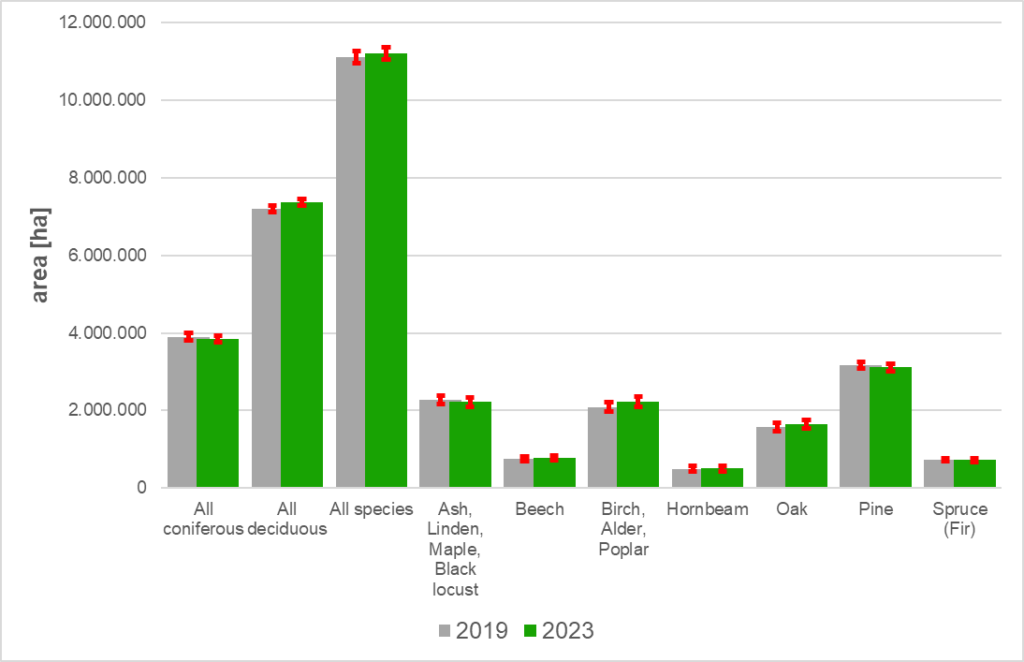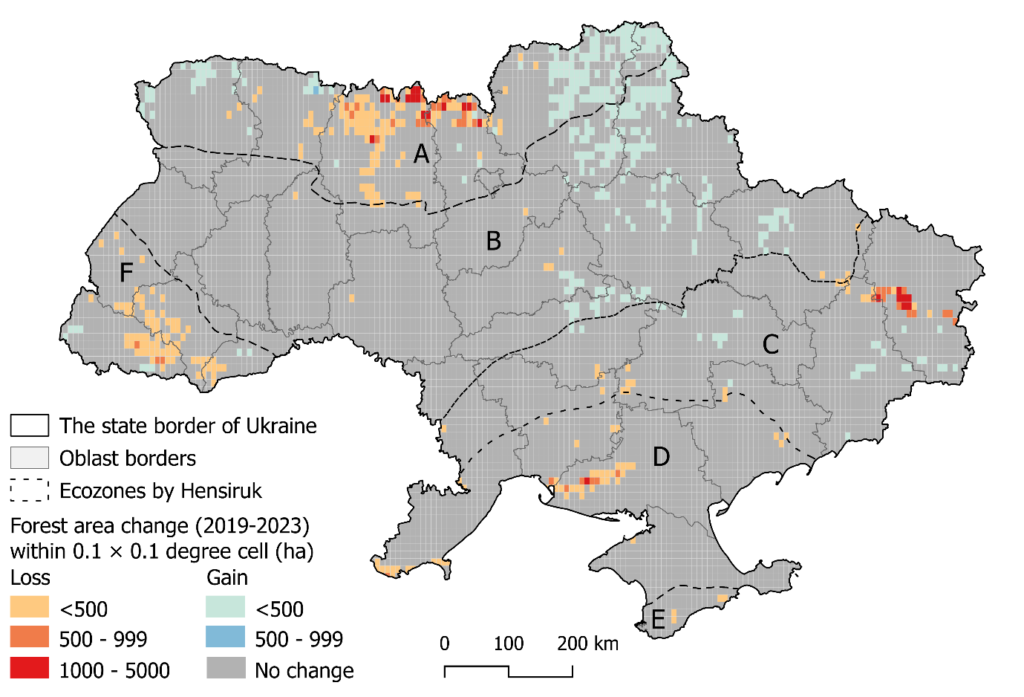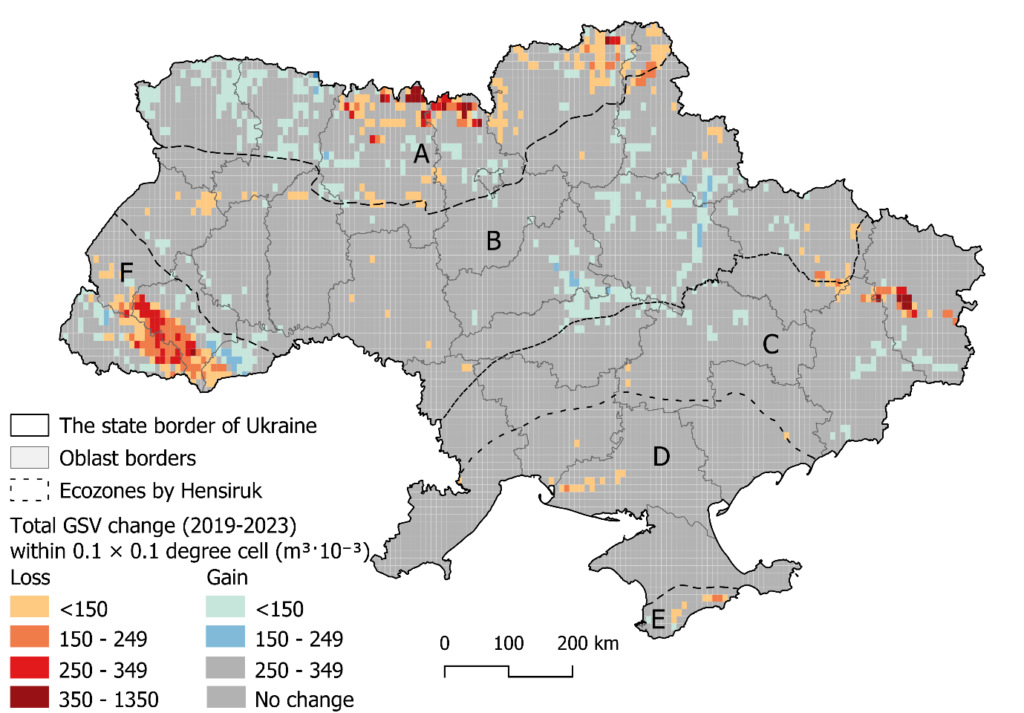RS- Inventory reveals local losses of forest area in Ukraine
In addition to the RS Inventory 2023, published earlier by the Centre of National Forest Inventory (nfi.lisproekt.gov.ua) the RS-based approach was used to evaluate short-term forest changes across Ukraine. With this objective, a group of SFI experts, under scientific lead of Viktor Myroniuk from National University of Life and Environmental Sciences of Ukraine, implemented another RS-Inventory of Ukrainian forests. This time the analysis was carried out for 2019 based on the same methodology as used for the 2023 RS-Inventory. Estimates at the state-level were obtained for 2019 by aggregating 20-m pixel values and then compared with the corresponding estimates for 2023. The comparison of the two datasets revealed no significant changes in forest resources at the country-level. This was mainly due to the balance between forest losses and forest gains in different regions of Ukraine.
Forest area estimations for RS-Inventory 2019 and 2023, structured by tree specie groups

However, a more detailed analysis of changes at pixel-level revealed hotspots of local increases and decreases of forest area and corresponding growing stock. This approach seemed to be useful for the exploring significant local changes, which might require appropriate forest management or even policy interventions.
The analysis identified losses of forest cover and growing stock within the war-affected areas. Such areas were observed in the southern part (Kherson), in the south-eastern part (Luhansk), and in the northern part (Kyiv). In addition, the significant forest losses were identified in the Ukrainian Carpathians and in Zhytomyr oblast (see maps below). While the decrease of forest area in Zhytomyr may be related to the 2020 forest fires and pine forest dieback, the forest loss in the Carpathians may be related to the increased intensity of logging. Nevertheless, more efforts at the spot are needed to identify the causes of revealed forest losses in these areas.
Most of the forest gain was identified in the northern regions (Chernihiv, Volyn) which may be related with forest regrowth on abandoned agricultural lands. Thus, the approach provided valuable information on forest change in Ukraine showing both forest loss and forest gain.
The RS-Inventory has proven to be a useful tool to address not only forest area change, but also forest attributes. In general, there is a very similar spatial pattern of changes on forest area and growing stock volume. However, the magnitude of change can vary. Linked data on changes in forest cover and growing volume inform on structural changes in forests. For example, large growing volume losses indicate harvesting or other factors (e.g., war-destructed forests) leading to removal of mature stands.
Methodology of analysing forest changes should be further improved and developed towards a scientifically justified tool for large-scale monitoring of damages or losses of forest resources, e.g. caused by forest fires, storm damages etc.
Sankey diagrams illustrate the changes al pixel level in detail (link). It should be noted that real changes and model uncertainties are overlapping here.

